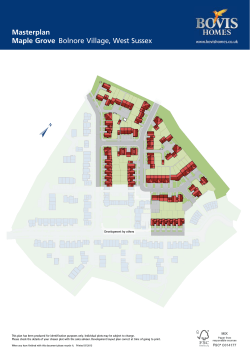
the PDF - Aspire Public Schools
Students take online Common Core test with minimal interruptions June 4, 2015 | By Laurie Udesky | 1 Comment After the state invested nearly $27 million since January to help schools shore up their Internet connections, millions of students have been able to take new online assessments aligned with the Common Core State Standards this spring with minimal technical interruptions. Students taking Smarter Balanced practice tests at Bayshore Elementary School in Daly City That’s according to the California Department of Education. Officials in six school districts and a charter school organization EdSource has been tracking as they implement the new standards said they have had very few interruptions in testing of any kind. That’s according to the California Department of Education. Officials in six school districts and a charter school organization EdSource has been tracking as they implement the new standards said they have had very few interruptions in testing of any kind. By the time schools close for the summer, an estimated 3.2 million 3rd- through 8th-graders and 11th-graders will have taken tests in English language arts and math known as the California Assessment of Student Performance and Progress, or CAASPP. Among the school districts and the charter school organization EdSource is tracking – Elk Grove, San Jose, Fresno, Visalia, Garden Grove and Santa Ana unified, and Aspire Public Schools – technology and testing managers said there have been no major technology problems. However, districts have reported some minor glitches. Problems have ranged from students not being able to log in to the computerized tests to testtakers accidentally submitting assessments before they were finished. There have also been delays in students being able to take tests because of programming issues, such as school officials entering into the testing system a wrong student name, ID number or other information. In those cases, districts can submit appeals to the California Department of Education so students can continue taking or retake the tests. “For the most part it’s the normal little things that happen with technology, and teachers have been very good at getting through the tests,” said Chris Ash, director of evaluation and research at Garden Grove Unified. The Visalia Unified School District, for example, has filed just a couple of appeals, said Phil Black, the district’s director of assessments. One was to allow a student to restart his test, as he had begun it on a version of a computer program that was incompatible with the testing system. Another was an appeal to allow a student whose test session window had closed to finish his test. Once students start taking a test, they can take breaks, and they have 10 days to complete it, he said. Compared to last year, when California conducted its first run of the assessments prepared by the Smarter Balanced Assessment Consortium, which was an unscored field test, Black said this run had much fewer problems. “It’s like night and day,” he said. Black attributed the substantial difference between this year and last to the district’s $42 million investment in Chromebook computers and updating Internet connections in the district’s older schools. In Aspire Public Schools, which runs 36 charter schools in California, Assessment Manager Will Georges said there have been a number of cases where students inadvertently submitted tests they had not finished, and teachers had to file appeals to get the tests reopened. He said Aspire schools have filed three appeals, but he said he’s received about 10 calls from teachers in the past few weeks about the “text-to-speech” function, which reads text aloud, not working for students with disabilities. The problem for three of those students, he said, was tied to incorrect information about them that had been entered into the system. According to Georges, it takes up to 48 hours for the operating system to correct the mistakes after they have been reprogrammed, causing a delay for those students taking the assessment. Cindy Kazanis, the director of the Educational Data Management Division at the Department of Education, acknowledged that there’s “a bit of lag time” in correcting information. She said the delay was an indication of a lack of familiarity with the system among some school staff who entered the information incorrectly in the first place. But she did not think it was a major problem. Kazanis also discussed a statewide slowdown in the testing that occurred on April 30 during a busy testing time in the morning, making it hard for students to log in. About 250,000 students were taking the test that day, Kazanis said. The slowdown was due to a scheduled software update of accommodations intended to enable students with disabilities to take the test. Kazanis explained that the software update could only be activated when students logged in to the test. As a result, too many updates occurred at the same time. Kazanis said the department should not have scheduled the update during “peak testing time.” Students with disabilities have also had to contend with other technical glitches. Students who are using iPads to take their assessments, for example, may find that the computerized “text-to- speech” function reads text to them at too rapid a pace to follow, according to a “known issues log” on California’s testing website. The log documents statewide technical problems with the assessments, suggests how to work around the problems until they’re resolved, and notes when they have been fixed in the system. Since there is no way to slow down the pace on an iPad, according to the log, schools are advised to test students on other devices. There are other technical problems for test-takers using iPads, according to the log. If an iPad has an operating system of IOS 8 or newer, a student can be logged off the test if using the “Tab” key to navigate or format text. Fresno Unified has had a few minor glitches that have been resolved pretty quickly, according to Dave Calhoun, director of research and assessment. Some involved problems logging in to the test or the test session shutting off before a student finished. Chris Ash, director of evaluation and research at Garden Grove Unified, said his schools’ testing has been running smoothly. “Mostly it comes down to a student typing an (ID) number wrong; every so often there’s a computer freeze,” he said. “For the most part it’s the normal little things that happen with technology, and teachers have been very good at getting through the tests.” The April 30 slowdown interrupted testing in Garden Grove Unified, Ash said. Some schools had to reschedule their testing for another day, but he said it was a “minor inconvenience.” But Dave Haglund, the deputy superintendent of educational services for Santa Ana Unified, sees the April 30 slowdown differently. “That’s one incident of downtime but it has an impact on assessment scores,” Haglund said. “My concern is if students and teachers don’t perceive this to be a reliable testing environment, they may not approach the assessment with as much seriousness.” Last year about 304 schools, representing less than 3 percent of the state’s public schools, had significant broadband Internet connection problems. The connectivity issues made it hard for those schools to give the field test last year without closing down all other computers, testing fewer students at a time, or busing students to a different location to take the assessments, according to the K-12 High Speed Network, a state program that monitors broadband issues among the majority of California’s K-12 public schools. In January, the K-12 High Speed Network disbursed a $26.7 million grant that the Legislature had set aside to help those schools most in need of broadband infrastructure improvements to run this year’s assessments. Only 64 schools still lack broadband connections for testing, said the network’s CEO, Luis Alejandro Wong. And Wong said that testing has not overloaded broadband capacity. Even though California is in the thick of testing students, only 20 percent of the broadband available to the majority of the state’s K-12 public schools has been tapped. “If you think of broadband like a freeway, it’s like only two lanes of a 10-lane freeway are in use,” he said. Stephen Mate, the director of technology services for Elk Grove Unified, said that out of 109,412 tests taken, he has filed a dozen appeals on behalf of students, which he expects to be answered in a few days. With the close of testing a couple of weeks away, he’s slightly reticent to make pronouncements. “I’m kind of superstitious,” he said. “But I think we’re on solid ground.”
© Copyright 2025









